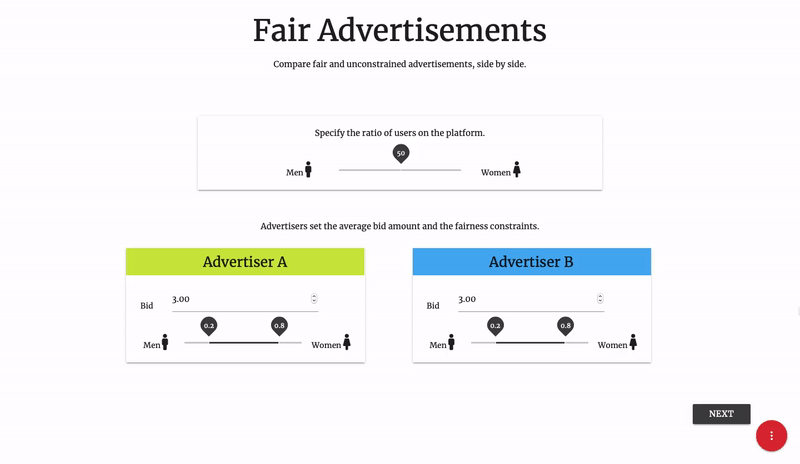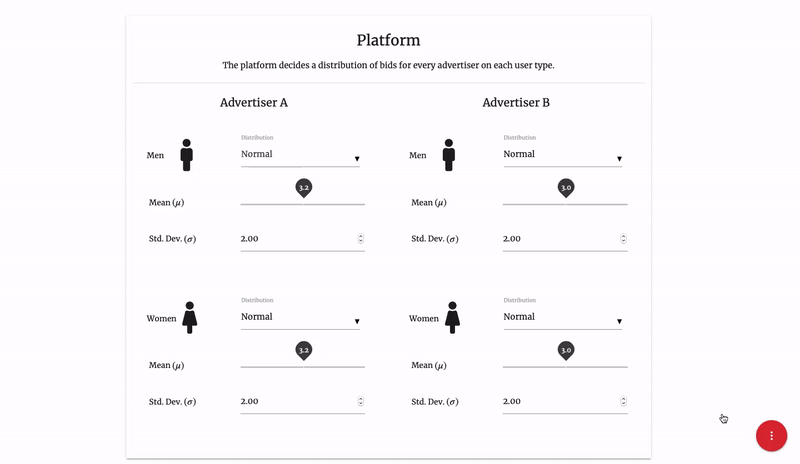Fair Online Advertising
Online advertising platforms are thriving due to the customizable audiences they offer advertisers. However, existing advertising algorithms can show an ad to a discriminatory audience with respect to sensitive attributes such as gender and ethnicity, inadvertently crossing ethical and/or legal boundaries. For example, a recent study found that STEM ads, specifically designed to be unbiased by the advertisers, were shown to more men than women across all major platforms (Facebook Ads, Google Ads, Instagram and Twitter).
In our advertising prototype, we present a framework which can serve fair advertisements. Our framework allows the platform to control the fraction of each sensitive-type an advertiser’s ad gets shown to while maximizing its ad revenues. The demo uses techniques developed in the paper: Fair Online Advertising.
In the prototype, we demonstrate an advertising platform with two advertisers and two user types. The demo is divided into three stages. In the first stage, we set up the audience and the advertisers. Here, we control the share of women on the platform and choose the average bids for both advertisers. The sliders control the lower and upper constraints on the fraction of women each ad is shown to.

As it is not practical for advertisers to place individual bids for every user, the advertiser instead gives some high-level preferences about their budget and target audience, and the platform places bids on their behalf.
In the next stage, we fix the distribution used by the platform to place bids on behalf of the advertisers. We choose a distribution for each advertiser and user type pair through the dropdown menu and then specify its parameters.

In the final step, the demo generates the revenue and coverage results from the optimal balanced and the optimal unconstrained framework. The charts show the fraction of men and women the advertiser’s ad was shown to. Here, a red bar graph indicates that the corresponding constraint is violated. The balanced mechanism always satisfies the constraints. As such, we do not expect it to have a higher revenue when compared to the unconstrained mechanism.

You can try out the advertising prototype here.